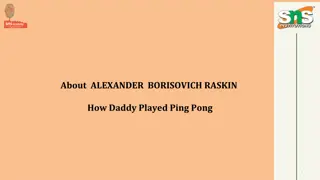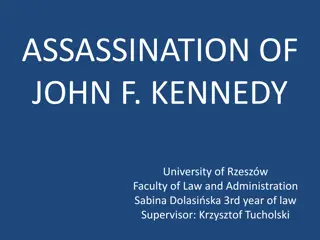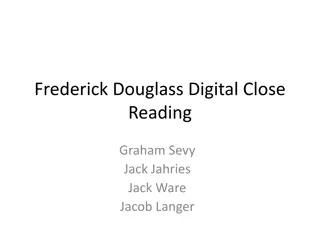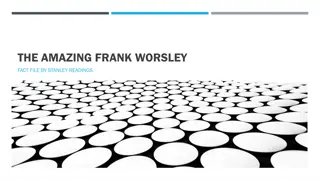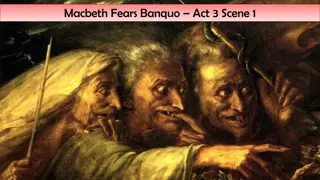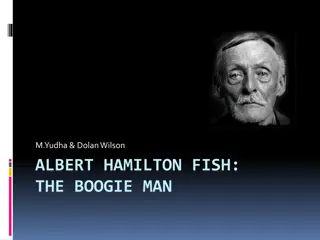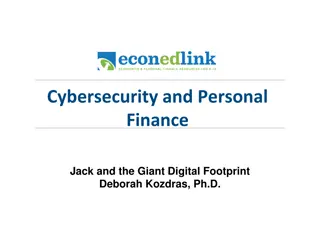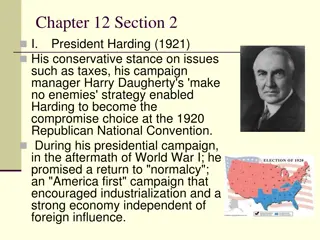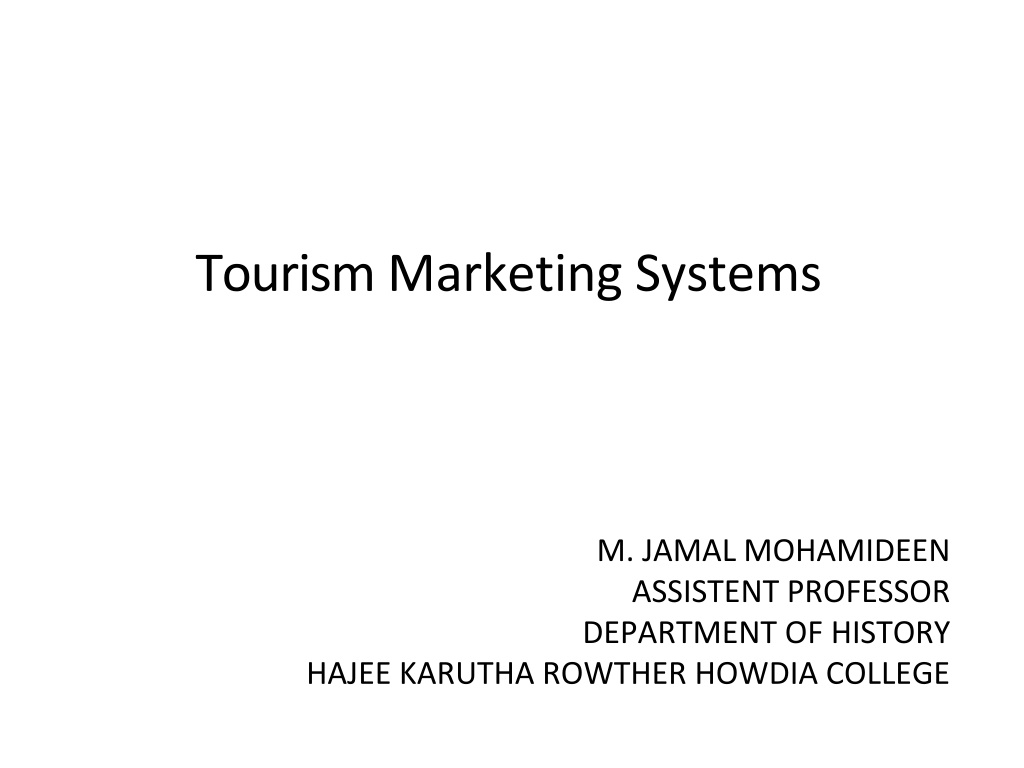
Understanding Tourism Marketing Systems and Strategies
Discover the organized efforts in tourism marketing systems to maximize tourist satisfaction and achieve growth. Explore the characteristics, challenges, and SWOT analysis of tourism marketing, highlighting strategies for success in the industry.
Download Presentation

Please find below an Image/Link to download the presentation.
The content on the website is provided AS IS for your information and personal use only. It may not be sold, licensed, or shared on other websites without obtaining consent from the author. If you encounter any issues during the download, it is possible that the publisher has removed the file from their server.
You are allowed to download the files provided on this website for personal or commercial use, subject to the condition that they are used lawfully. All files are the property of their respective owners.
The content on the website is provided AS IS for your information and personal use only. It may not be sold, licensed, or shared on other websites without obtaining consent from the author.
E N D
Presentation Transcript
Tourism Marketing Systems M. JAMAL MOHAMIDEEN ASSISTENT PROFESSOR DEPARTMENT OF HISTORY HAJEE KARUTHA ROWTHER HOWDIA COLLEGE
Definition the organized, combined efforts of the national tourist bodies and/or the businesses in the tourism sector of an international, national or local area to achieve growth in tourism by maximizing the satisfaction of tourists. In doing so, the tourist bodies and businesses expect to receive profits Product climate, history, culture, amenities, The tourism product is the sum of all the factors in an area that can result in consumer satisfaction. A tourist or his travel agent combines the different components to get hisown tourist product. CCDD Create, Communicate, Deliver & feedback Marketing means achieving the firm's goals by identifying the needs and desires of consumers, and then satisfying them better than competitors. Tourism marketing is the application of marketing concepts in the travel and tourism industry. Tourism marketing could be complex due to theproduct being an amalgam of many different industries such as accommodation and transportation. The markets also vary widely, and determining the consumers' preferences could bedifficult. 2
Characteristics intangible Consumption happens at once consumer relies on pre- purchase information to make his decisions because he has no option to see different producers are involved to create and market the product Demand isseasonal motivations of consumers varywidely Intermediaries such as travel agents have astrong control over product design, distribution, promotion and pricing High fixed costs are often involved, resulting in the use of short-run marketing Features Market research seeks to understandthe consumer product development aims to meet hisneeds Analysis and selection of target markets, also known as segmentation, means studying potential customer groups and selecting only certain groups whose needs and wants canbe best met with a certain producer'sproduct Marketing strategy seeks to reach the target markets using promotion, advertising,pricing anddistribution. Communication occur in three ways: external, internal andword- of-mouth External marketing uses formal communication channels to promote the tourism product tothe traveler, boasting of its benefits and making promises Internal marketing communication occurs when the tourism service provider makes contact with the tourist and delivers the promisedbenefits. Word-of-mouth communication occurs informally when visitors or employeesdiscuss their experiences of the tourism product to others. involves severalsteps 3
SWOT analysis of Tourism Strengths Vast geographywith forests, deserts, mountains & beaches. Varied culture. Many historical monuments. Knowledge of English by majority of localpeople. Efficient transport facilities. Opportunities Increased privatization. CWG 2010,Grandprix2011 Medical tourism. Go-greeninitiative. World-class hotels and airports Threats Terrorism. Tensions with Pakistan. Better promotion by other countries. Economicslowdown. Weakness Lack of adequateinfrastructure. Safety and security of foreign tourists. Misconception about Indiaby foreigners Lack of maintenanceof monuments, fortsetc. Many languages anddialects. 4
Core concepts in Marketing Needs state of felt deprivation including physical, social,and individualneeds. Wants Needs become wants when they are directed to specific objects that might satisfy the need. Demands Wants + buying power Needs and Wants Fulfilled through a Marketing Offer: Some combination of products, services, informatio n, or experiences offered to a market to satisfy a need or want. 6
Target markets & segmentation Differencesin needs, behavior, demogra phics or psychographics are used to identify segments. The segment served by the firm is called thetarget market. The market offering is customized to the needs of the targetmarket. Market The Marketplace is physical, as when onegoes for shopping in a store. Marketspace is digital, as when one goes shopping on the internet. Metamarket is describedas a cluster of complementary products and services that are closely related in the minds of consumers but are spread across a diverse set of industries. 7
Marketing Management Philosophies The Production Concept The production concept holds that customers will favor products that are available and highly affordable and that management should therefore focus on improving production and distributionefficiency. The production conceptis useful when: 1) Demand for a product exceeds the supply. 2) The product's cost is too high and improved productivityis needed to bring itdown. The risk with this concept is in focusing too narrowly on company operations. Do not ignore the desires of the market. The Product Concept The product concept states that consumers will favor products that offer the most quality, performance, and features, and that the organization shouldtherefore devote its energy to making continuous product improvements. 1. Some manufacturers mistakenly believe that ifthey ``build a better mousetrap'' consumers will beat a path to their door just for theirproduct. 2. The product concept can also lead to marketingmyopia the failure to see the challenges being presented by other products. R'tist@Tourism, PondicherryUniversity 8
The selling Concept Many organizations follow the selling concept. The selling concept is the idea that consumers will not buy enough of the organization's products unless the organization undertakes a large-scale selling and promotion effort. 1. This concept is typically practiced with unsought goods (those that buyers do not normally think of buying). 2. To be successful with this concept, the organization must be good at tracking down the interestedbuyer. 3. Industries that use this concept usually have overcapacity. Their aim is to sell what they make rather than make what will sell in the market. 4. There are not only high risks with this approach but low satisfaction by customers. The Marketing Concept The marketing concept holds that achieving organizational goals depends on determining the needs and wants of target markets and delivering the desired satisfactions more effectively and efficiently than competitors do. The marketing and selling concepts are often confused. The primary differences are: 1) The selling concept takes an 'inside-out'' perspective (focuses or existing products and uses heavy promotion and sellingefforts). 2) The marketing concept takes an ``outside-in''perspective (focuses on customer needs, values, and satisfactions). Many companies claim to adopt the marketing concept but really do not unless they commit to market-focused and customer- driven philosophies. R'tist@Tourism, PondicherryUniversity 9
The Societal Marketing Concept The societal marketing concept holds that the organization should determine the needs, wants, and interests of target markets. It should then deliver the desired satisfactions more effectively and efficiently than competitors in a way that maintains or improves the consumer's and the society's well- being. 1) The societal marketing concept is the newest of the marketing philosophies. 2) It questions whetherthe pure marketing concept is adequate given the wide variety of societal problems and ills. 3) According to the societal marketing concept, the pure marketing concept overlooks possible conflicts between short-run consumer wants and long-run consumer welfare. 4) The societal concept calls upon marketers to balance three considerations in setting their marketing policies: a) Companyprofits. b) Customer wants. c) Society's interests. 5) It has becamegood business to consider and think of society's interests when the organization makes marketing decisions. 10
Economic importance of Marketing Large scaleproduction marketing makes mass selling possible and thereby facilitates large scale production. Economies of large scale production help to reduce the cost of production perunit. EconomicDevelopment Marketing gives a boostto transportation, banking, insurance, wareho using and other economics activities. It makes the economy strong and stable by balancing production with consumption. In fact, marketing is the kingpin that keeps the economy movingahead. Foreign exchangeearner marketing helps in exploring foreign markets and in exporting goods and services. It is through marketing that a country earns valuable foreignexchange. Creation ofutilities Marketing includes all activities involved in the creation of place utility, time utilityand possession utility. Place utility is created by making goods available at the places where they are needed. Time utility is created by making goods available at the right time. Possession utility is created when goods are transferred to those who need them. Generationof revenue profit generation and marketing is the only source to meet its expenses and earnprofits. survival and growth of the business enterprise depends on the effectiveness and efficiency of marketing. Customersatisfaction Marketing helps to identify and satisfy the needs and wants ofconsumers. Customer satisfaction has a important role in marketing without which a business can t be successful. EmploymentGeneration marketing offers challenging andrewarding jobs to a large number of persons. It also generates employment in production by enlarging the scale of distribution and production. Higher standards ofliving Marketing is helpful in improving the standard of living of people by offering a wide variety of goods and services with freedom of choice. It has modernized the living standards of people through the supply of quality products at reasonableprice. 11
Tourism marketing TourismDemand Highly unstable Seasonal Economical political Facilitators Motivators resistance factors characteristics Price elasticity responsiveness of demand to change in price Income elasticity increase in individual s income will not necessarily mean an increase in travel demand. May result in an increase in quality product or destination. Service Characteristics Curiosity and desire totravel Tourism marketing creates desire in tourists Multifaceted activities produces tourism product Various sub sectors, that are in themselves complete industries Tourism promotion in various forms in different socio economic structures Marketing strategy is must 12
Tourism Product Intangible, irreversible, perishable, lack ofownership, Heterogeneity, Non-material, consumed where produced, multiplicity of producers, highly unstabledemand, dominant role of intermediaries,motivations. Tourism Demand Determinants 13
Tourism Marketing mix 2. Pricing Cost Demand Competition Duration Mode oftransport Peak/Non-peakseason Destination 8 P s in Tourism Product Place Price Promotion People Process Productivity &Quality Physical Evidence 1.Product Accommodation Attraction Transportation Recreation Shopping Restaurant 14
4.Place 3. Promotion Different states highlighting about their features. E.g. 1. Kerala- God s own country Highlighting about backwaters, ayurveda, elephants, h ouseboats, beaches etc. Incredible India and Atithi Devo Bhava are taglines of Indian Tourism Our guest is blessed and Our visitor is god Aamir Khan as brand ambassador for Atithi Devo Bhava for Indian tourism. Use of websites to sell tourism. Brochures, pamphlets, ads in newspapers. E.g. Raj, Kesari and ThomasCook. The destination is the important aspectin place. Travel agents, tour operators etc. are distributionpoints. Proper infrastructure, transportand communication. 5.People Role of people is very important inany service. In tourism, people involved are travel agents, guides, airline crew members, receptionist in hoteletc. Contacts with people may be high, mediumor low. Examples: In case of airlines: The passenger will have high or medium contact with the air-hostess, ground- staff where as low or no contact with the pilot. 2. In case of railways: - The passenger will have high or medium contact with travel agents or ticket issuer but low or no contact with the loco pilot. 1. - 15
6. Process Travel agents should provide best dealsto customers after understanding their requirements. Guides should have in- depth knowledge about the locations,monuments, forts, history etc. Employees should deliver what the company promises to thecustomer. Physical appearance of guides also matters alot. 16
7. Physical Evidence 8. Productivity & Quality It involves positioning the process, theoverall destination, the intangiblesetc. It also involves positioning oftourism as Nationalpriority. 17
Tourism Demand Modeling and Forecasting the explanatory variablesfor tourism demand include origincountry income, destination country tourism prices, substitute destination country tourism prices, tastes, etc. Empirical studies usually use livingcosts for tourists in the destination as the tourism price. Various demand models can be used to estimate and forecast tourism demand. modeling tourism demand in a vector autoregressive (VAR) framework, to forecast the number of holidays spent by non residents Tourism demand modeling and forecasting are very important for tourism-related business decisionmaking Stock effect, market response effect Analysis Tourism demand can be measured in termsof number of tourist visits from an origin country to a destination country tourist expenditure by visitors from the origin country in the destination country tourist nights spent by visitors in the destination country 18




